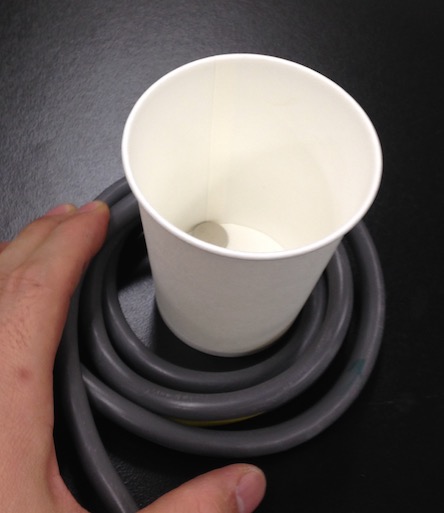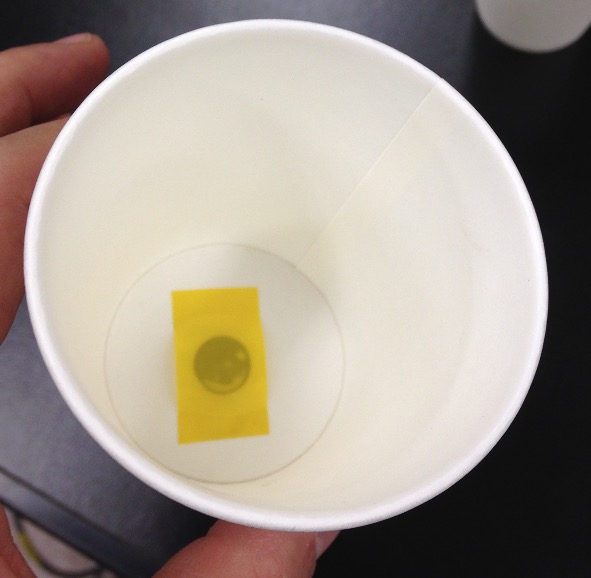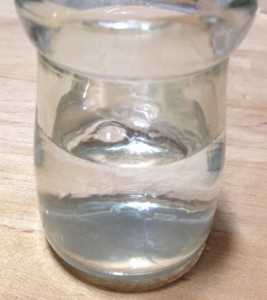The Dancing Magnet: How to Listen to AC Current’s Secret Sound
I’m Ken Kuwako, your Science Trainer. Every day is an experiment.
Did you know that electricity has a “sound”? Of course, you can’t hear anything by putting your ear up to a power line. But what if that electricity is Alternating Current (AC)? The power that runs our homes actually has a unique rhythm—you could call it a “pulse.” Today, I’m going to introduce a magical science experiment that lets you “listen” to this invisible electrical rhythm using nothing but a paper cup and a magnet!
The main star of this show is an experimental device I introduced recently: the “Pascal Wire.”
This is a cheap and incredibly effective homemade apparatus made from a multi-core cable (like a 10-core wire) where several conductors are bundled together. It requires a bit of crafting, like soldering, but it’s quick to make yourself, so I highly recommend it. Today, let’s use this Pascal Wire to hear the “sound” of AC.
The Science Recipe
What You’ll Need:
Pascal Wire (homemade)
Paper cup
Neodymium magnet (small but powerful)

Procedure:
Connect the Pascal Wire to an AC (Alternating Current) power supply.
Coil the Pascal Wire into a spiral shape, roughly the same size as the bottom of the paper cup.
Place the neodymium magnet inside the paper cup.

Run AC through the Pascal Wire and observe what happens.
Experiment Results: The Dancing Magnet and the Audible “Sound”
I recorded a video for you. Be sure to turn up the volume when you watch!
Well, what did you think? The moment you switch on the power and current flows, you can see the magnet start dancing wildly inside the paper cup!
Solving the Mystery: Why Does the Magnet Dance?
It’s amazing, isn’t it? What exactly is the mechanism at work here? The key lies in Alternating Current (AC) and Electromagnets.

The magnet vibrates rapidly due to the magnetic field created by the current.
AC is Current that Switches Direction Unlike Direct Current (DC) from a battery, the Alternating Current (AC) we used constantly switches its flow direction (positive and negative) at a furious pace—dozens of times per second (50 times in Eastern Japan, 60 times in Western Japan).
A Coil is an Electromagnet The coil we made by wrapping the Pascal Wire becomes an electromagnet when current runs through it.
AC + Electromagnet = ? This means that when you run AC, which is constantly reversing its direction, through the coil, the electromagnet’s North and South poles also violently flip-flop 50 or 60 times every second.
The Magnet’s Dance! So, what happens when you place a neodymium magnet (a permanent magnet with fixed N/S poles) on top of this electromagnet that is switching poles at lightning speed? That’s right! It relentlessly alternates between attracting and repelling, causing the magnet to shake violently and “dance” (vibrate).
The “AC Pulse” and the Principle of the Speaker
If you tape the magnet to the bottom of the paper cup, like this, and put your ear to the cup, you can hear a low “buzz.”

This sound is precisely the sound created when the tiny vibrations of the magnet are transferred to the paper cup, causing the cup to vibrate the surrounding air. It is the very “pulse of the alternating current” itself! And you may have already realized it: this is the exact principle of a loudspeaker (speaker)!
A speaker works by sending a “complex electrical signal (AC)”—which is the music—through a coil. The force between the coil and a fixed magnet causes the diaphragm (the paper cup in our experiment) to vibrate, transforming the electrical energy into air vibrations, or “sound.” Isn’t it exciting to learn the mechanism of a device you use every day with such a simple experiment?
The Pascal Wire only takes a little time to make, and you can even get the paper cup and magnet from a dollar store. When you have a bit of free time, please try this experiment to “hear” the sound of electricity!
Contact and Requests
Make the wonder and fun of science more accessible! We clearly explain enjoyable science experiments you can do at home and the tips for performing them. Feel free to search around!
・The content of the Science Idea Notebook is now a book. Find out more here. ・About the administrator, Ken Kuwako: here ・For various requests (writing, lectures, experiment classes, TV supervision/appearances, etc.): here ・Article updates are posted on X!
![]() We stream experiment videos on the Science Idea Channel!
We stream experiment videos on the Science Idea Channel!


